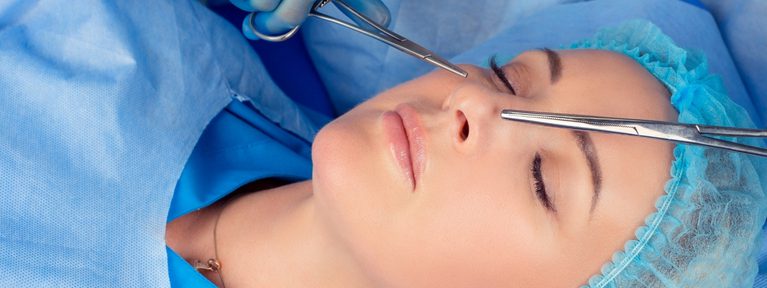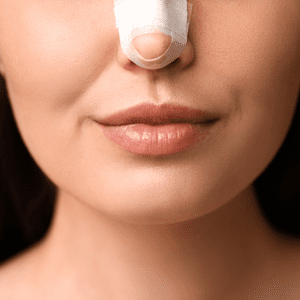Rhinoplasty, commonly known as a “nose job,” is one of the most popular cosmetic surgeries worldwide. Whether it’s to improve breathing, correct deformities, or enhance facial aesthetics, rhinoplasty offers a solution tailored to individual needs. In this article, we will delve into what rhinoplasty involves, its benefits, risks, and everything you need to know about recovery.
1. What is Rhinoplasty?
Rhinoplasty, or nose reshaping surgery, is a cosmetic or reconstructive procedure performed to change the structure, shape, or size of the nose. It’s often sought after by individuals looking to improve both their physical appearance and breathing function. Skilled plastic surgeons utilize this surgery to harmonize facial features, correct deformities due to trauma or genetics, and even resolve structural issues that cause breathing difficulties.
2. Reasons People Choose Rhinoplasty
People seek rhinoplasty for various reasons, including:
Aesthetic Improvement: To change the shape, size, or angle of the nose to enhance facial harmony.
Breathing Improvement: Structural issues like a deviated septum can hinder breathing, and rhinoplasty can address these.
Correction of Injury or Birth Defects: Individuals with nose deformities from birth or past injuries often undergo rhinoplasty for correction.
Boost in Confidence: Enhanced appearance can contribute to improved self-esteem and confidence.
3. Types of Rhinoplasty
Rhinoplasty can be classified into several types, each tailored to specific needs:
Cosmetic Rhinoplasty: Alters the appearance of the nose for aesthetic reasons.
Functional Rhinoplasty: Aimed at improving breathing by correcting internal structures.
Revision Rhinoplasty: A secondary surgery performed to correct or refine results of a previous rhinoplasty.
Ethnic Rhinoplasty: Customizes rhinoplasty techniques to maintain ethnic characteristics while enhancing aesthetics.
4. The Rhinoplasty Procedure
Rhinoplasty is performed in two primary ways:
- Open Rhinoplasty: An incision is made across the columella (the strip of tissue between the nostrils) to allow for greater precision and access to the nasal structures.
- Closed Rhinoplasty: Incisions are made inside the nostrils, leaving no visible scarring. This approach is typically for minor adjustments.
During the procedure, a surgeon may remove, reshape, or augment nasal cartilage and bones to achieve the desired shape and structure.
5. Preparing for Rhinoplasty Surgery
- Consultation with a Surgeon: The first step involves a detailed consultation with an experienced rhinoplasty surgeon to discuss goals and determine the best approach.
- Medical Evaluation: Pre-surgery evaluations like blood tests and imaging are typically conducted to ensure the patient is fit for surgery.
- Lifestyle Adjustments: Patients are advised to avoid smoking and limit alcohol intake in the weeks leading up to surgery, as these can affect healing.
6. Recovery Process
Post-surgery, recovery from rhinoplasty can take several weeks. Key steps to a successful recovery include:
- Swelling and Bruising: The initial weeks often come with swelling and bruising, especially around the eyes and nose.
- Follow-Up Appointments: Regular follow-ups are essential to monitor healing and address any concerns.
- Avoiding Strenuous Activity: Physical activities and exercises should be limited for a few weeks to reduce the risk of complications.
7. Benefits of Rhinoplasty
Enhanced Facial Symmetry and Aesthetics: Rhinoplasty can create a balanced look that complements other facial features.
Improved Breathing and Health: Those with structural issues experience significant improvements in breathing.
Increased Self-Confidence: With a refined nose, many patients report greater confidence in their appearance.
8. Risks and Considerations
Like any surgery, rhinoplasty carries certain risks, including:
- Infection and Bleeding: As with all surgeries, infection and minor bleeding are possible.
- Scarring: Although minimal, scarring can occur depending on the type of rhinoplasty.
- Anesthesia Risks: Anesthesia is generally safe but can pose risks for certain individuals.
- Unfavorable Results: A revision rhinoplasty may be needed if the results don’t meet expectations.

Rhinoplasty offers a life-changing transformation, addressing both aesthetic and functional needs. For those considering a nose job, consulting with an experienced surgeon and understanding both the benefits and risks is essential. With proper care, it can lead to results that improve both confidence and quality of life.

